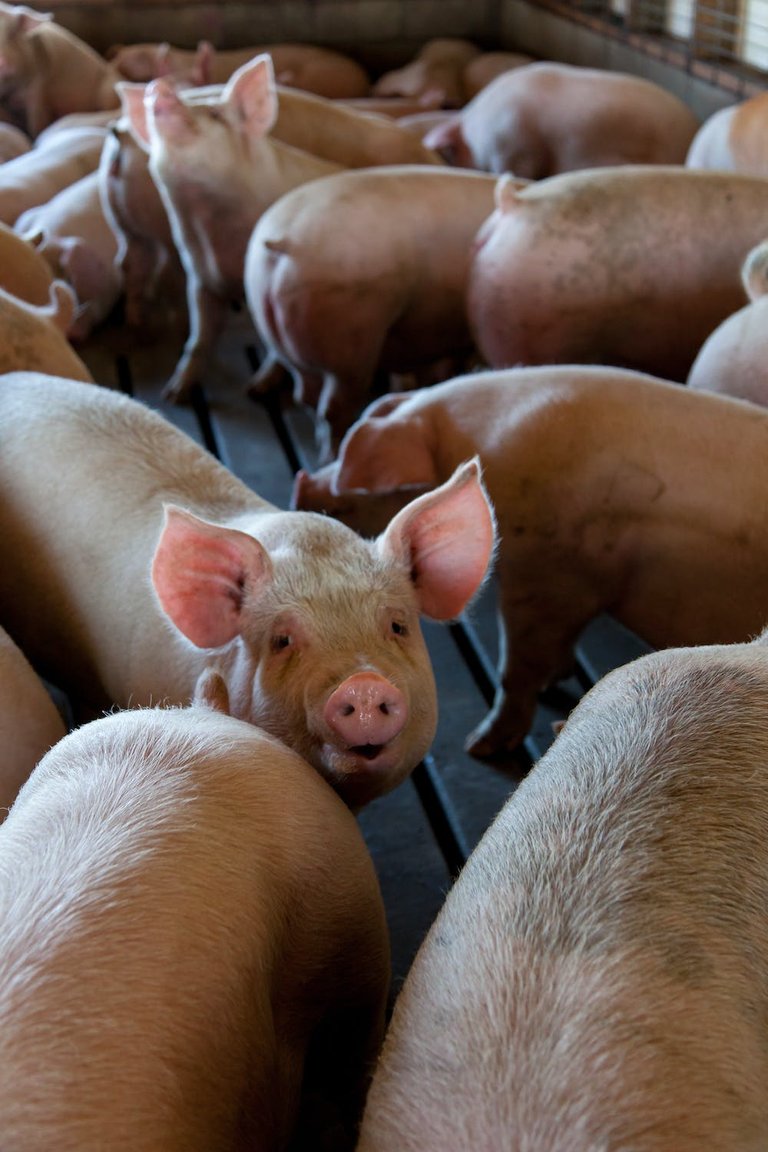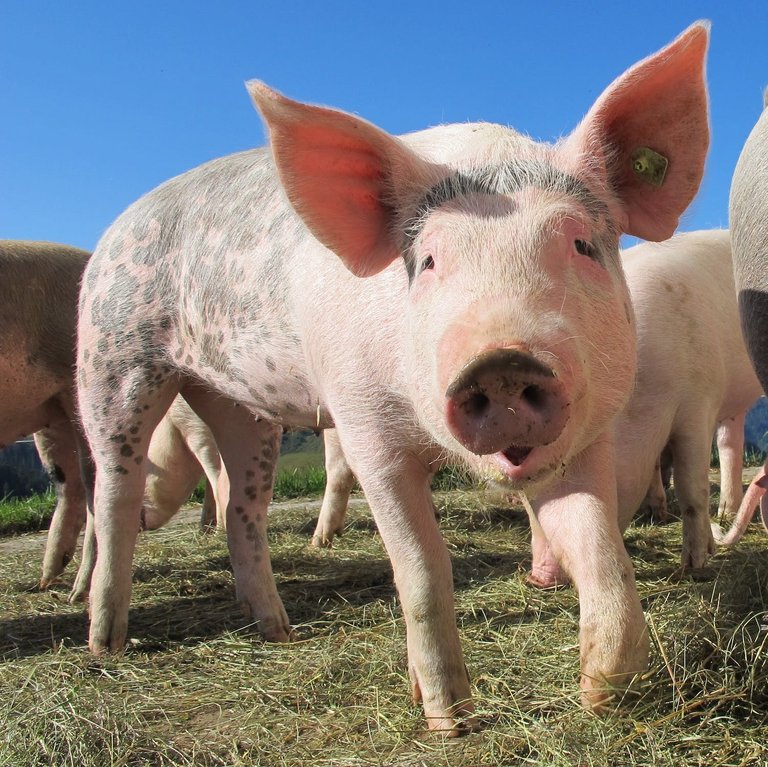The effect of Procrine Reproductive and Respiratory Syndrome (PRRS).
As you know friends, I am very passionate about animals either domestic or farm animals, and writing about the possible infections and diseases that may affect them, is a thing I have been using this fantastic platform to publicize for some time now. I am grateful for all the support I get from this platform and this wonderful @stemsocial community.
Today, I will be writing about the BLUE EAR DISEASE, is this new to you or are you familiar with it? Let's explore this topic together and learn a thing or two.
Blue ear disease is also called Procrine reproductive and respiratory syndrome (PRRS), it is a viral disease caused by the PRRS virus. This virus majorly affects pigs and it is transmitted through direct contact with infected pigs.
The disease was recognized first in the United States in the year 1987, the causative virus was however identified in the year 1991 in the Netherlands.

pexels.com
Clinical signs of the disease are not generally the same, they vary from one herd to another. The presence of the infection could lead to several reproductive damage; Stillborn, weak pigs that die after birth, premature farrowing, reproductive failure, and death in sporadic cases. Other signs include; Pneumonia, coughing, fever, sneezing, eye discharge, and newborn piglets that occasionally occur with sticky brown materials found over the eyelids.

pexels.com
The transmission of the disease is through oro-nasal exposure, through semen or needles. This virus is shed for 1-2 months in cases of young animals through saliva, feces, nasal secretions, and urine. Transmission is done through close contact between animals, through contact with shared equipment. Clinically normal pigs could also remain persistent carriers of the transmitted vertically in utero or postpartum. The moment a herd becomes infected, the PRRS virus establishes an endemic cycle of transmission that would lead to a chronic or recurring episode of respiratory or reproductive disease.
There is a possibility of having a herd-to-herd transmission when there is an introduction of carrier animals or when there is a use of infected semen. Boars, however, only shed the virus in their semes for 3-4 days. An infected sow that gets infected at 85-90 days of pregnancy, may produce infected piglets. The piglets have the ability to shed the virus for a very long time, and in the case of a colder temperature, the virus could last for up to a month.
In a particular environment, an infectious virus was inactivated rapidly through drying, the viability of a virus is maintained more appropriately in the presence of a humid environment.
Whenever there is a clinical sign of respiratory disease at any production stage in herds, PRRS should be highly considered. PRRS virus infection has been shown to significantly increase the rate of morbidity that is associated with Haemophilus parasuis and Streptococcus suis infections.
The first means of control is by the determination of the prevalence of infection, and the timing of the virus transmission. Different approaches can be taken to different production stages;
Nursery Management.
- To prevent the introduction of infected stock to the nursery.
- Maintaining a strict all-in/all-out flow in the nursery.
- Euthanasing weak pigs as they could be infected persistently.
- Vaccinating adult stock with a more modified live vaccine.
- Partially depopulating weaners alongside the administration of vaccines.
Partial Depopulation.
Another effective means of eliminating the PRRS virus from an endemically infected weaned pig population in farms is partial depopulation. This result is achieved excellently when it is mixed with vaccination.
Test and removal or Herd closure.
A lot of commercial farms have proven that this method has worked appropriately. This protocol works by preventing replacements into the farm for about 4-8 months, this halts the spread of infection with the endemically infected breeding herd and eliminates carriers over time.
McREBEL Technique.
The full meaning of McREBEL is Management Changes to Reduce Exposure to Bacteria to Eliminate Losses, this strategy was proposed by McCaw in 2000. This technique is made up of steps that will help to reduce the spread of the PRRS virus amongst piglets, especially in herds that are undergoing acute outbreaks.
Vaccination.
Early vaccination will help significantly to reduce infection risk. With current advancements, breeding animals that have shown to be exposed to PRRS virus, could be vaccinated with a modified live vaccine.
Hope this virus is not transferable to humans as many types of virus we have witnessed
Hello friend, not in my opinion, it hasn't been diagnosed to be a zoonotic disease just yet, so we can still relax and hold our breath!!
Alright 👍
Thanks for your contribution to the STEMsocial community. Feel free to join us on discord to get to know the rest of us!
Please consider delegating to the @stemsocial account (85% of the curation rewards are returned).
Thanks for including @stemsocial as a beneficiary, which gives you stronger support.